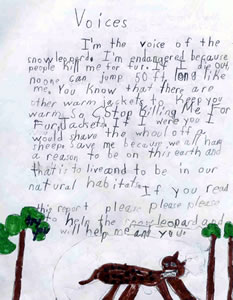Information Fluency
Information fluency is the ability to apply the skills associated with information literacy, computer literacy and critical thinking to address and solve information problems across disciplines, across academic levels, and across information format structures (Callison).
According to The Associated Colleges of the South (http://www.colleges.org/~if/if_definition.html), using critical thinking skills and appropriate technologies, information fluency integrates the abilities to:
- collect the information necessary to consider a problem or issue
- employ critical thinking skills in the evaluation and analysis of the information and its sources
- formulate logical conclusions and present those conclusions in an appropriate and effective way
Content area educators and teacher librarians must coordinate their efforts to achieve information fluency in their learners. For example, a language arts or social studies teacher might create an assignment that asks students to interview an adult about their career. This project might address a specific subject area standard. However without information skills related to conducting an effective interview, students will be unable to reach their content-area goal. In the same way, a media specialist can ask students to memorize interviewing techniques, but these strategies are meaningless without an authentic project. The skilled instructional media specialist sees the importance of collaboration and development of a range of skills and experiences to promote information fluency.

Information Exploration Hierarchy
Information fluency is the highest level of information evaluation and management for the mature information literate person relative to their age and ability levels. At the most sophisticated level, the mature student information scientist moves efficiently and effectively across a variety of information systems, databases and communication technologies. This person has the accomplished background to assimilate, manage, apply or even create emerging technologies to address information issues yet to be identified.
Information inquiry is a teaching and learning process based on information and media literacy elements of questioning, exploration, assimilation, inference, and reflection. These elements are common to most linear models for information search and use, but represent the cyclical processes necessary to address new questions that arise in any investigation. Techniques involve a combination of ancient Socratic questioning methods and modern technologies to create exciting real and virtual learning environments for students and teachers to think and act critically and creatively. Learning is often based on authentic projects, issues and reflections that are interwoven among personal, academic and workplace information needs. Those who apply the philosophy, concepts and techniques associated with Information Inquiry are Instructional Media Specialists, regardless of professional position as classroom teacher, library media specialist or computer specialist.
Information and media literacy involve understanding how to evaluate and place value on information that is either sought in a systematic manner to address personal, academic or workplace needs. The ability to understand, evaluate and manage information constantly presented in a mass communication world.
 Information skills involve understanding how to identity and extract information to address a basic information need; usually in an academic setting.
Information skills involve understanding how to identity and extract information to address a basic information need; usually in an academic setting.
Library skills focuses on how to locate and cite resources available in the local library.
Visualizing Information Fluency
As the instructional media specialist designs inquiry-rich projects that promote information fluency, they must consider the connections between information literacy, technology literacy, critical and creative thinking, and content literacy.
The project titled "Voices," (on the right) shows how the student information scientist was engaged in a creative approach to understanding endangered animals. Rather than simply writing a traditional animal report, the student is asked to be creative in their thinking about the plight of their chosen endangered animals. What would it be like to be this animal? Why are these animals threatened?
Click the student project on the right to enlarge the visual. Click the close box to return to this page.
 View Information Fluency (3:26).
View Information Fluency (3:26).
In this video interview, Daniel Callison discusses how three areas combine to address information age and inquiry; (1) critical/creative thinking, (2) information/media literacy, (3) increased level of collaboration. He stresses the need for more sophisticated skills, increased planning skills and information fluency with teacher, student, and media specialist working together.
Use of this video clip complies with the TEACH act and US copyright law. You should be a registered student to view the video.
![]() Read Chapter 5: Information Literacy, Media Literacy, and Information Fluency in THE BLUE BOOK by Callison and Preddy, p. 69-84.
Read Chapter 5: Information Literacy, Media Literacy, and Information Fluency in THE BLUE BOOK by Callison and Preddy, p. 69-84.
![]() Read Key Word: Information Fluency (PDF draft version) Daniel Callison in School Library Media Activities Monthly (2004).
Read Key Word: Information Fluency (PDF draft version) Daniel Callison in School Library Media Activities Monthly (2004).
Key Words
Learn More
Brown, David (1999). Information Fluency: What? Why? How? - PowerPoint Presentation
Digital Information Fluency Model.
Overholtzer, Jeffrey & Tombarge, John (2003). Promoting Information Fluency. Educause Quarterly, 1. (PDF)
